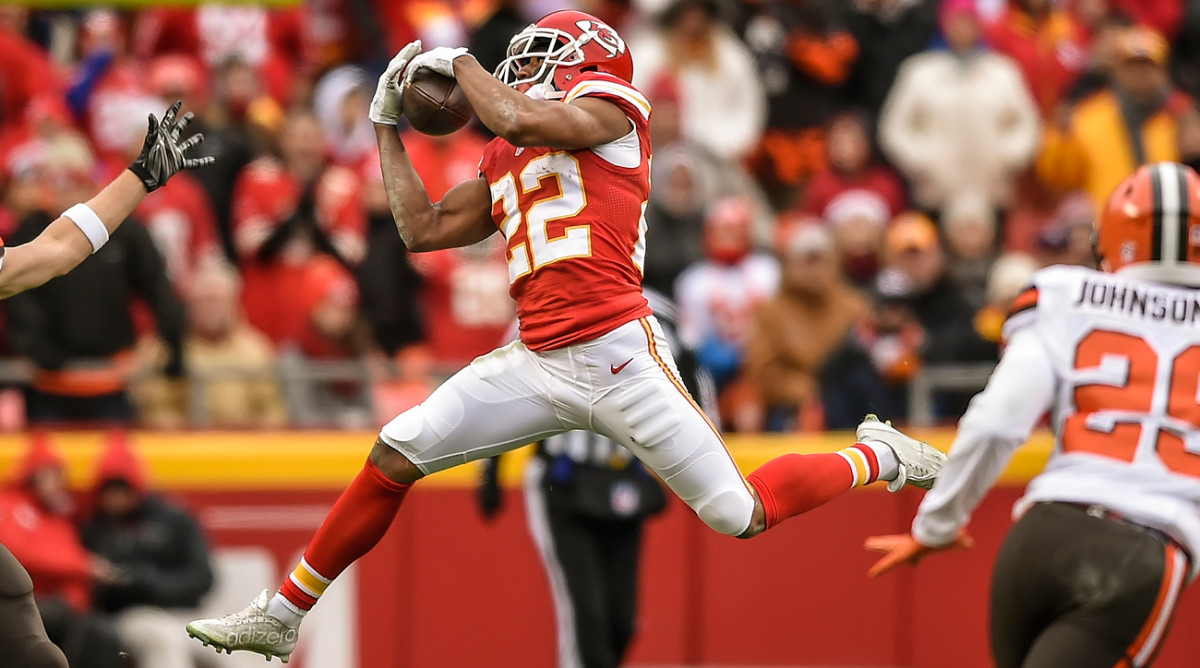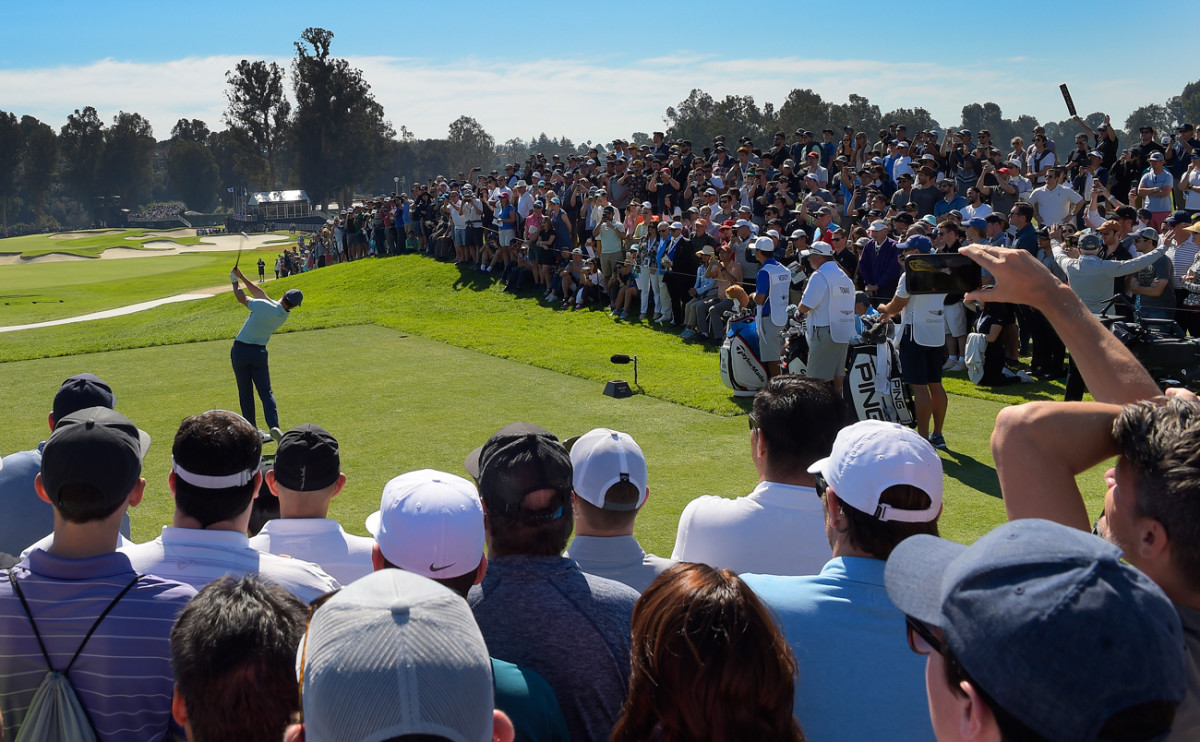What the Marcus Peters Trade Means for the Chiefs and Rams on the Field

A 25-year-old star cornerback available for trade inherently comes with red flags. A star corner available for trade for a mere 2018 fourth-rounder and 2019 second-rounder? Yikes.
Some of Marcus Peters’s flags are known. He was dismissed from the team at the University of Washington. The Chiefs drafted him 18th overall anyway, and then-GM John Dorsey said Peters wasn’t a “risky” pick because the Chiefs have “a unique locker.” Of course, every team believes its locker room culture is unique. The locker rooms that actually are get that way by shipping out the disruptors.
We can surmise that Peters was a disruptor. Last year the Chiefs suspended him in Week 14 after his bizarre exit (and shoeless return) late in the Jets game the previous week. He’d been overtly emotional, if not demonstrative, at other points in the season. And there’s almost certainly more that we don’t know about, given that these things aren’t enough to warrant dismissing a star with two years left on his cap-friendly rookie deal (including a 2020 option year).
That favorable contract is one reason the Rams made this trade. The man Peters replaces, 28-year-old Trumaine Johnson, should fetch $12 million to $15 million annually in free agency. Peters is a cheaper, and in some ways better, version of Johnson. Both are off-coverage defenders, capable of matching up to receivers and even more capable of driving on the ball at the top of routes. Johnson, with his strong, lanky 6'2" frame, has at times traveled with plus-sized No. 1 receivers. Peters, purely a left corner in Kansas City, never has, but there were games last season in which opposing quarterbacks totally avoided his side of the field.

That’s not to say Peters is a shutdown corner. He is not always disciplined in his technique and assignments. Mix in his aggression, and you get a corner who, naturally, gives up some plays. But you also get one who makes plays—including ones he seemingly shouldn’t.
A perfect illustration of Peters came last season in Week 3 against the Chargers. Late in the first half, Peters gave up a 14-yard catch to Tyrell Williams on 3rd-and-13. He’d played his matchup coverage too loose and also stared down the backfield. But that approach had paid off earlier in the game when Peters intercepted Philip Rivers by eying him (instead of the receiver) and converting a man coverage assignment into his own Cover 2 zone technique. It doesn’t get riskier than that—and indeed, Peters’ man, Williams, streaked uncovered deep downfield—but it’s precisely that kind of play that can swing a game and make a quarterback play hesitantly.
The trick for Peters, with the help of Rams defensive schemer Wade Phillips, is to find the right balance. The young corner has an uncanny sense for playing the ball, but it can’t come at the expense of honoring the overall coverage. Trumaine Johnson would go untargeted for stretches because his receiver simply couldn’t get open. When Peters goes untargeted, it’s often on the strength of his playmaking reputation, not lockdown coverage.
While some teams might avoid throwing at Peters, others will attack him with downfield double moves early in games—a clear indication that they game-planned to go after him. Peters could see that more in Los Angeles given that the corner opposite him, Kayvon Webster, is sturdier than those who played opposite him in Kansas City. And it’s entirely possible that Phillips will ask Peters to travel with certain receivers, putting him in parts of the field that are unfamiliar.
Those K.C. corners—Steven Nelson and Terrance Mitchell, plus enigmatic ex-Raider David Amerson, who was signed two weeks ago—will play bigger roles with Peters gone. There’s no doubt that trading Peters downgrades Kansas City’s defense for 2018. Much has been made about the Chiefs’ acquisition of third-year corner Kendall Fuller, who will be coming over in the Alex Smith trade. Fuller is ascending, but the notion of him as a budding star was spawned by the shock of that trade (Washington gave up all that for Alex Smith?!) Fuller was Washington’s No. 3 corner, even though No. 2 Bashaud Breeland was wildly inconsistent. (Kansas City plays more matchup coverages than zone-based Washington; it will be interesting to see how Fuller transitions.)
Presumably, Andy Reid and first-year GM Brett Veach are high on this draft’s crop of cornerbacks. If they’re not—and we won’t know until April26—then trading Peters was almost strictly an addition-by-subtraction move. That’d make him an even bigger roll of the dice for Los Angeles.
ALSO ON THE K.C.-L.A. FRONT
It was surprising to hear reports that the Chiefs wanted edge rusher Robert Quinn as part of the trade and the Rams said no. Quinn is only 28 (as of May), but after multiple injuries (including to his back), he no longer has the explosiveness he did when he had 19 sacks in 2013. That’s a problem, because his repertoire of pass-rushing moves is unrefined and limited. Plus, he’s never been a strong playside run defender. Quinn is due $11.4 million in 2018, and the Rams can save $12.3 million in cap space by cutting him. It appears they won’t, since they wouldn’t even let him sneak into their blockbuster trade.
TWEET ELABORATION
wouldn't mind #Giants drafting at a position other than QB. Eli has multiple years left and it's mostly a ready-to-win-now roster. Last year's record was aberrational.
— Andy Benoit (@Andy_Benoit) February 21, 2018
The Giants can legitimately view themselves as just a few pieces away from playoff contention (or better). They must boost their ground game, both at running back and along the interior offensive line (assuming they can’t re-sign free agent center Weston Richburg and guard/tackle Justin Pugh). They could also use a linebacker. But those are the only glaring needs. This team has a dynamic wide receiver (which regulates defenses), a destructive defensive line and a stingy secondary full of cover corners. It is much closer to the 11-5 unit we saw in 2016 than the 3-13 one we saw in 2017.
BLAKE BORTLES
Peter King had some excellent analysis of the Blake Bortles contract in his Monday column. It’s a good deal for all parties involved. Also worth considering is that late last season, Jaguars offensive coordinator Nathaniel Hackett, with his play-action designs, and head coach Doug Marrone, with his commitment to the run, found the right schematic combination with Bortles down the stretch last year, and Bortles mostly rose to the occasion. This includes the AFC Championship, where Bortles played one of his best games ever. If coaches and management didn’t show at least some commitment to him after this, what message would that send to Jacksonville’s other players?
NONFOOTBALL THING ON MY MIND

I loved Rory McElroy complaining about noisy golf fans the other day. The biggest losers in sports are golf fans who yell. As I understand it, fans are not permitted to yell before or during a player’s shot. Extend that to after the shot. Until a ball hits the ground or the cup, the crowd must keep quiet. Never once has a golfer felt better about his shot because some dumbass with a 27 handicap told the ball to get in the hole.
Question or comment? Email us at talkback@themmqb.com.
